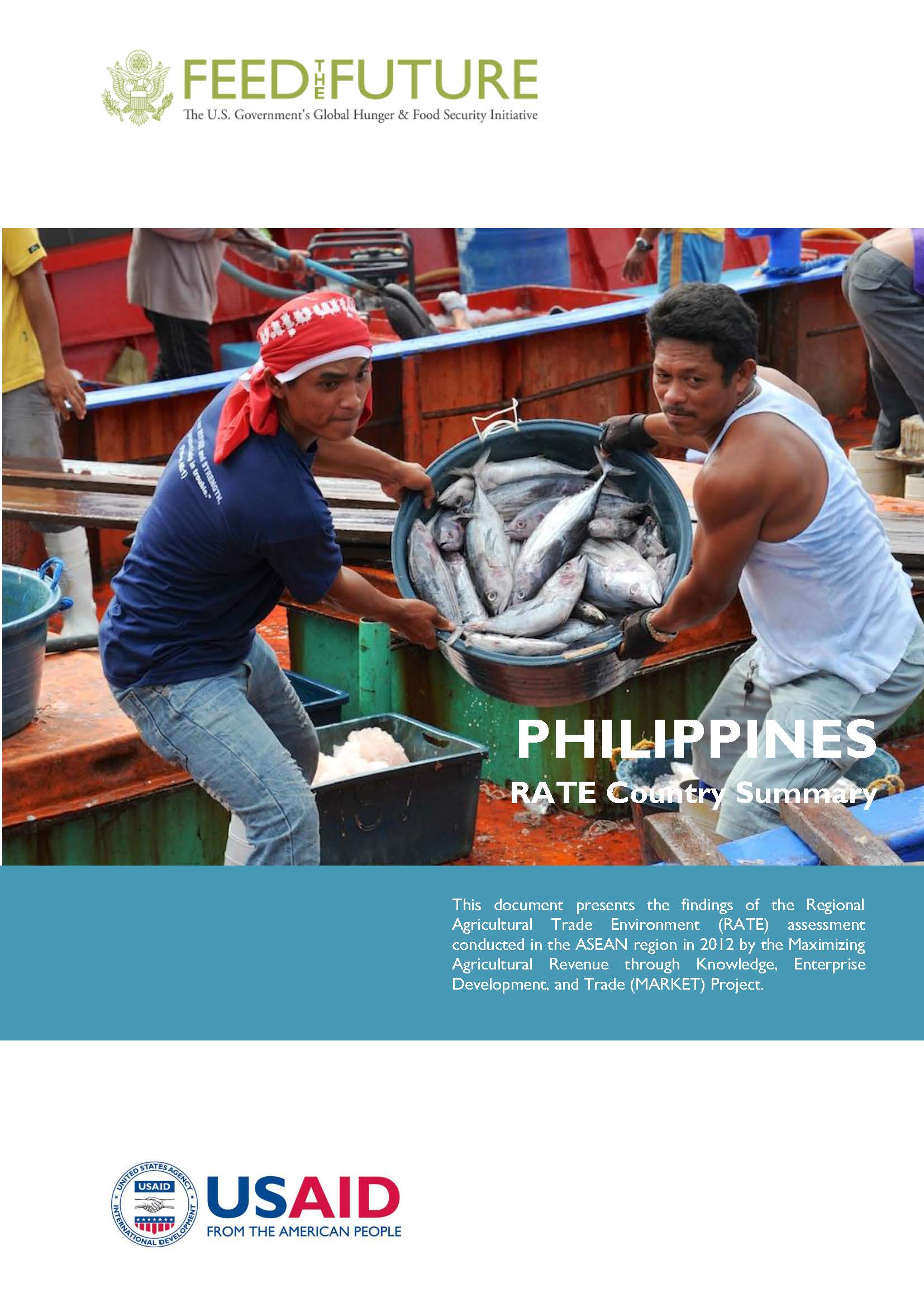Home » Philippines Regional Agricultural Trade Environment Assessment
![]() (1 MB) Philippines RATE Summary
(1 MB) Philippines RATE Summary
As of mid-2012, the Philippines was awash in a “steady flow of positive economic news.”1 In addition to sound debt ratings and a well-performing stock market, the country’s service sector is growing, thanks in part to robust product outsourcing and business call centers. The Philippines has a relatively young and ethnically diverse population, which, at just over 100 million, is the second largest in ASEAN.
Over 7,100 islands across the Philippines’ archipelago fill a land area of nearly 300,000 square kilometers, with arable and permanent crop land at 35 percent of the total area. The Philippines is a heavily urbanized society, and just 11.8 percent of GDP derives from agriculture.. A majority of the 27 percent of the population that lives below the poverty line resides in rural areas. Of these, 75 percent engage in subsistence or tenant farming. The segment of the Philippines’ agriculture sector that produces plantation crops is economically much stronger and more secure than the segment that produced subsistence crops, which includes a great many small individual and cooperative farms.
The current government assumed office in 2010. As a matter of policy, it focuses on family farm sustainability and poverty reduction in value chains that, in its view, are important to food security. The government’s interest in the related issues of land reform and food security have led to the highest allocation of budget resources for agriculture being directed to initiatives that promote rice self-sufficiency and family and cooperative farm development. Past programs in these areas have not had the full desired impact, however, because of governance deficits, process and capacity constraints in the legal enabling environment, and weak implementing institutions.
As the Philippines’ services sector has boomed, the agriculture sector has stagnated. The country is now a net importer for certain key products. Programs led primarily by the Department of Agriculture still receive heavy funding, but efforts to remove legal and institutional constraints, including promoting an increase in transparency, are underway.
Date
Wednesday, April 23, 2014 - 4:45am








Comment
Make a general inquiry or suggest an improvement.